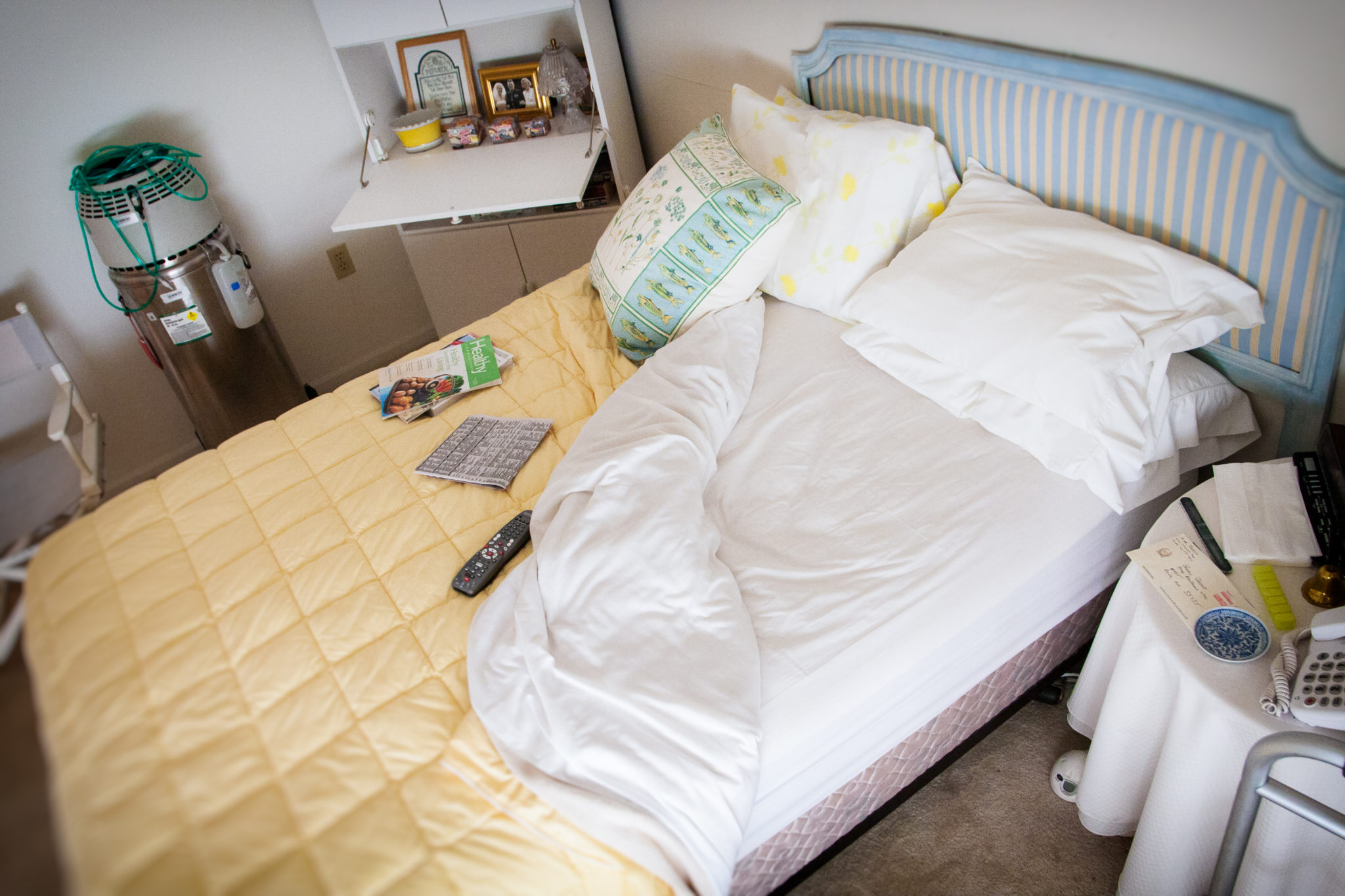
A Loved One Moves Into Hospice
My grandmother Bev had lived in her Edina, Minnesota condo for as long as I could remember, just a fifteen minute drive from my family's home in South Minneapolis. A big draw for my sister and me as kids was its nearby movie theater and an ice skating rink; we'd go skating and then get hot chocolate and popcorn with her in the warming house. Every Thanksgiving and Christmas was spent in that condo, with a large rotating cast of characters at first hosted by herself and her husband Cliff, and then for many years after he'd passed, she hosted them on her own: inviting her three grown children, their their girlfriends and boyfriends, their later spouses, their babies and toddlers and teenagers; and those teenagers years later would bring girlfriends, who would later become spouses, who would also later bring children. Everyone was welcome with equal room made at the table. Technically she was my step-grandmother and also the step-grandmother of many of my cousins, but she never treated us as anything other than loved grandchildren.
Everything in that condo was simultaneously sacred and handed over as playthings. Bev had a beautiful blue wood cabinet with bright glass shelves full of sweet, curated little knick knacks from her life: Victorian valentines, tiddlywinks, tiny books and delicately painted porcelain eggs. We were seven years old and allowed to take out any of it, "just be careful." That cabinet felt like the doorway to Narnia. She had an ornate collection of silver gleaming in the dining room, and a WWI faded green medical trunk full of toys in the guest room.
When I was in my late 20s, Bev was diagnosed with emphysema. "Can you imagine?" she would say, "of all the people, and I've never smoked a single cigarette in my life." She continued to live at home for a few years with support from family to run any errands and help around the house, but after a fall she was taken to the emergency room. There, the decision was made to transfer to a lovely hospice center nearby — whose staff was so incredible both to her, and to my family during a hard time. "Loving" is the only way to describe it.
Over the next few months we'd rotate watching episodes of Mad Men with her in that room. "Here comes Miss America!" she'd say any time I walked in the door. She passed away as I'd known her when she lived: with a rotating cast of visitors, who even in her final days she would shower with compliments and love.
Bev's condo is the first Home Portraiture book I made. It wasn't meant to be a business, it was meant to be a present. Shortly after Bev had been moved into hospice, my stepmom asked me if I could stop by the condo and just take a few pictures of it as it was, before they had to start thinking about dividing up possessions and cleaning and selling it. I went to her condo later that week to shoot it, and realized it was the first time I had ever been alone inside it. I suddenly felt like I couldn't just take a few photos: what if I missed something important? Everything felt important. Her makeup brushes on the counter were important. The final grocery store notes on the fridge. I took photos of it all because the loss of any of it felt unbearable.
It was two years later before I looked at those photos again. I had been wondering what to make or give my stepmom for the winter holidays, and realized I'd never sent these to her. I started looking into options for creating the best photo book I could, and spent hours poring over different sources — my stepmom and I are both big book nerds with an emphasis on the Book As Beautiful Object. Books are a somewhat holy item in our house, from her collection of first editions to the leather bound journals from Italy with the perfect heavy cream pages she worked for as a sales rep. I didn't just want this to be good, I wanted it to be the best.
And so, caught up in the "make a quality product" practical mentality, I was taken off guard by the overwhelming emotional response that Christmas when she opened her present. I watched her startle, and then begin to cry. "What have you done?" she kept saying. "What have you done?" She later wrote to me:
"This book is an amazing treasure that goes well beyond a static recording of rooms and objects. I was blown away when I first opened it. Your sensitive, thoughtful eye for details and lovely, creative photography captured the soul of what made my mother's home a place of joy, love, warmth and laughter for our family."